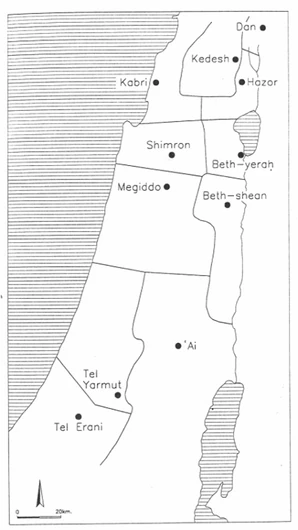Hazor stands north of the Sea of Galilee along the cross-roads of main trade routes from Sidon to Beth-shan and from Damascus to Megiddo. Thus, it had a very strategic location. Hazor was populated

Location of Hazor
throughout much of the Bronze and Iron Ages, both as a Canaanite and Israelite city, and so is an important site for pre-biblical and biblical archaeology. Hazor is also

Hazor
important in archaeology of Israel because it is mentioned in other sources at beginning of 2nd millennium. Hazor is also an important site in the Hebrew Bible, and is later fortified by Solomon. (Examples of the remains of large
building projects during Israelite occupation are discussed below). Hazor emerged as a huge and important metropolis in the Middle Bronze Age. In the Late Bronze Age, however, Canaanite Hazor ended after a period of decline. The destruction of Hazor in the 13th century BCE could coincide with the period of Israelite settlement. The identity of the destroyers of Hazor has been debated, with suggestions including the Israelites (Y. Yadin), the Sea Peoples (V. Fritz) and the Deborah/Barak events in Judges 4-5 (Y. Aharoni). In Iron Age I (13th – 11th centuries), Hazor was resettled (only upper tell) in a limited way. Hazor was reurbanized in the 10th century (Iron IIA), though was a smaller city than before, and
served as a major administrative center in kingdom of Israel (remains of administrative buildings: storage buildings/silos; huge building projects like 9th century water system; refortifying/rebuilding of western military structures). Israelite Hazor ended after period of decline and impending crisis, probably due to internal problems connected to Assyrian campaigns. According to his annals and Bible, Hazor was destroyed by Tiglath-Pileser III, which ended Hazor’s tenure as an important site.